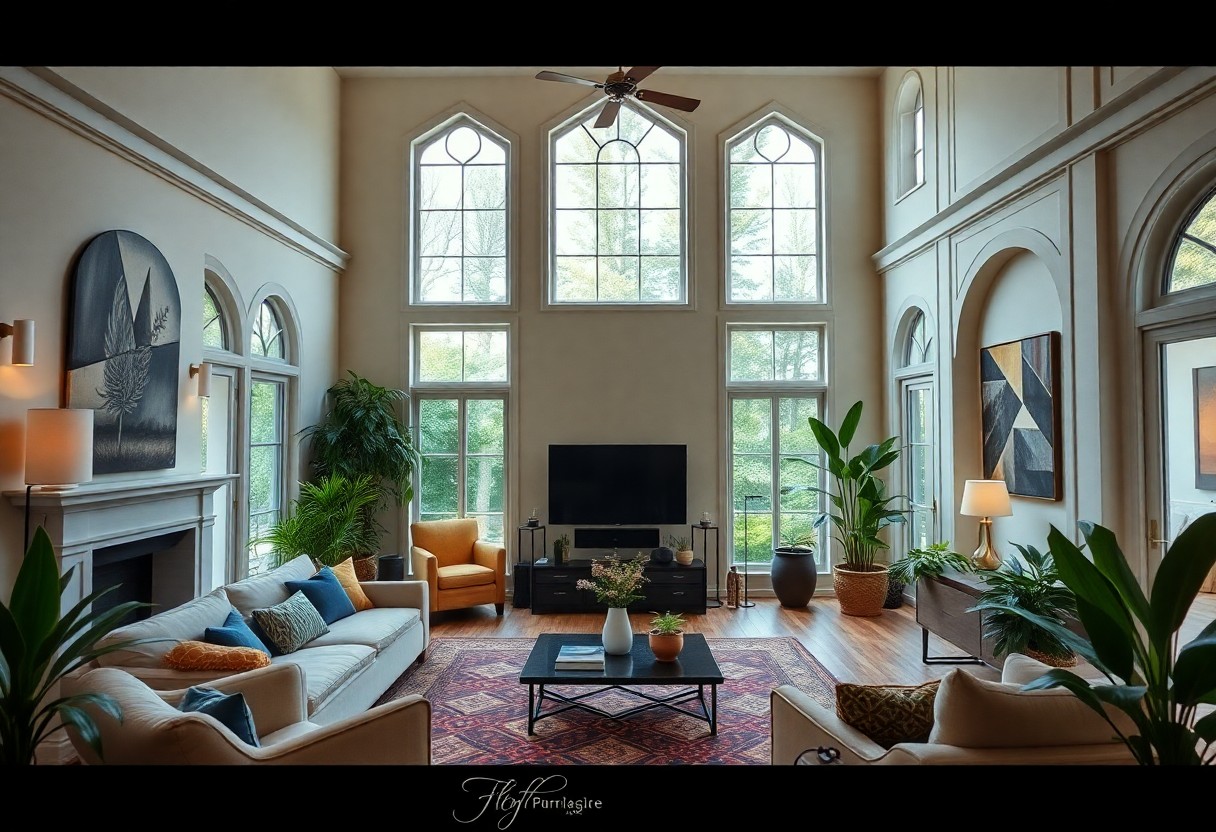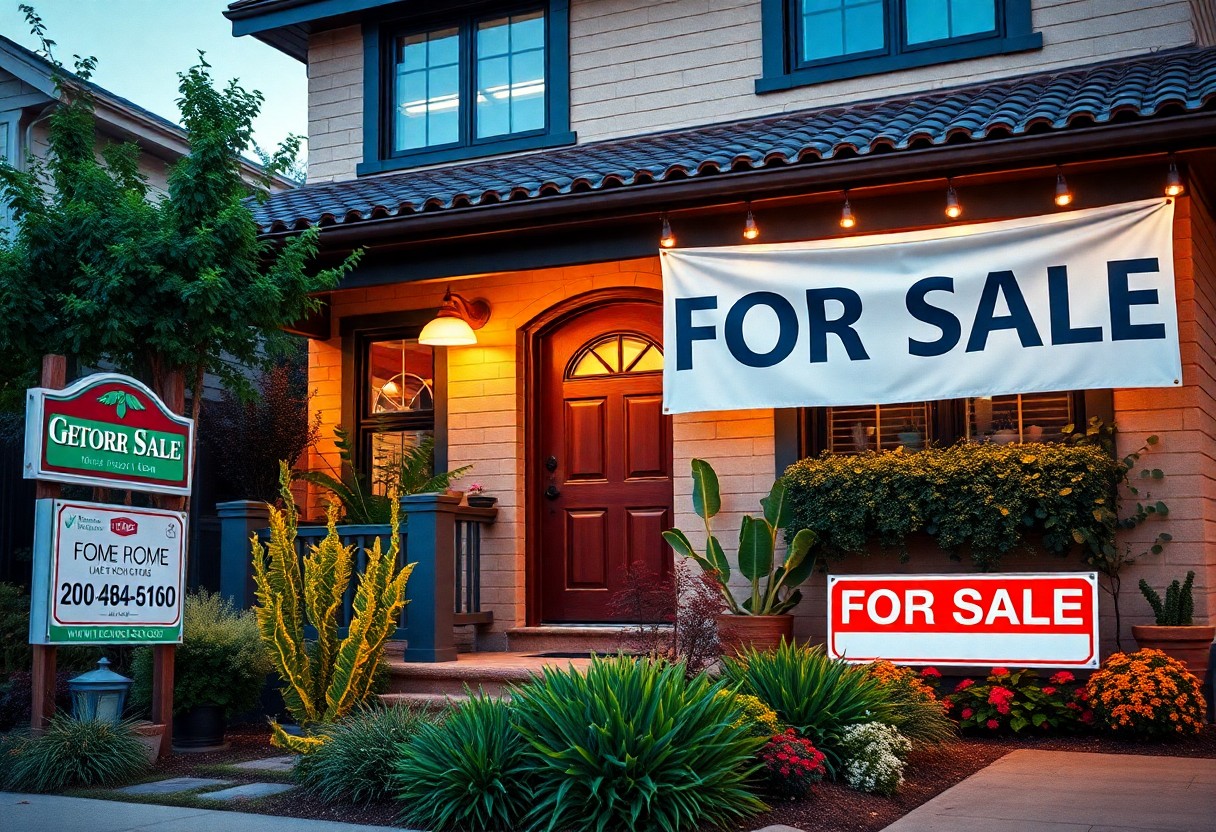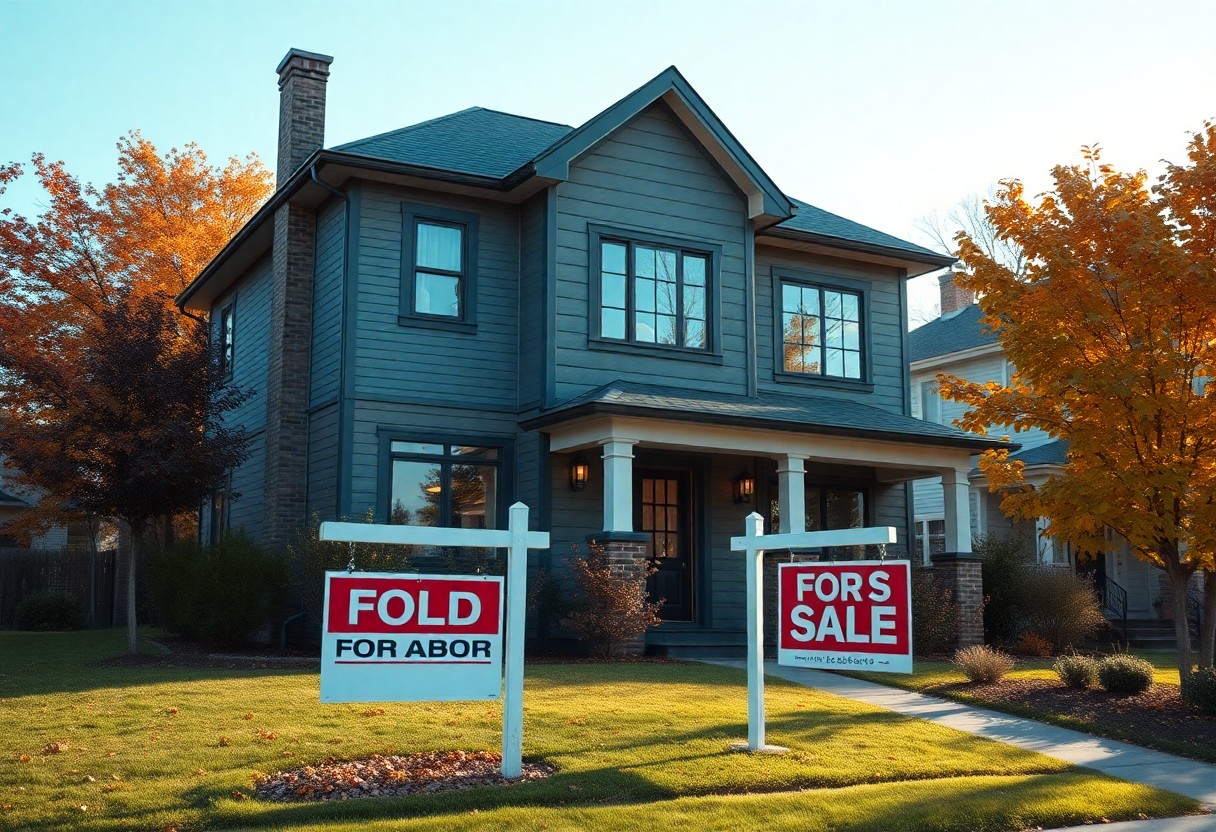Over time, you may have put effort into making your home truly special, and now it’s time to leverage those unique features to maximize your selling price. In this guide, you’ll discover effective strategies to showcase what sets your property apart, attract more potential buyers, and ultimately drive up your home’s value. From emphasizing architectural details to promoting outdoor spaces, you will learn how to highlight your home’s best attributes and make a lasting impression. With the right approach, you can turn those distinctive qualities into a financial advantage.
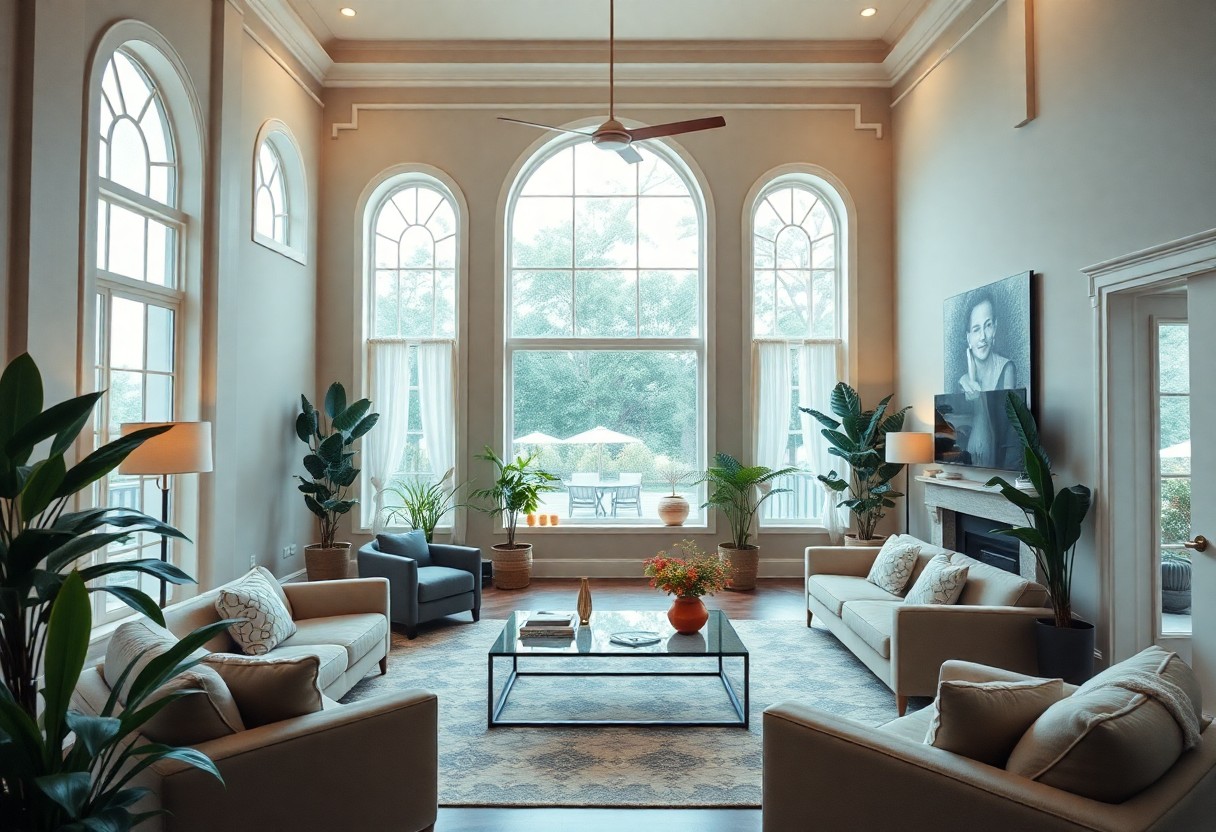
Key Takeaways:
- Emphasize the unique features of your home, such as architectural details, energy-efficient upgrades, or custom renovations, to attract buyers willing to pay more.
- Stage your home to highlight these unique features, using furnishings and decor that complement your space and create an inviting atmosphere.
- Provide potential buyers with detailed information about the neighborhood, local amenities, and unique attributes that contribute to the home’s overall value.
Types of Unique Features That Attract Buyers
Before venturing into the specifics, it’s important to understand that highlighting the unique features of your home can significantly increase its market appeal and sale price. Buyers often look for elements that set a property apart, making it memorable and desirable. Here are some types of unique features that can attract buyers:
- Architectural Elements
- Landscaping and Outdoor Spaces
- Energy-Efficient Technologies
- Smart Home Features
- Upgraded Interior Finishes
This list illustrates how diverse unique features can be, ultimately allowing you to present your home in the best possible light.
| Feature Type | Description |
|---|---|
| Architectural Elements | Distinctive design features such as vaulted ceilings, crown molding, and custom staircases. |
| Landscaping and Outdoor Spaces | Well-designed gardens, patios, or decks that create inviting outdoor living areas. |
| Energy-Efficient Technologies | Upgrades like solar panels, energy-efficient windows, and high-efficiency appliances. |
| Smart Home Features | Home automation for lighting, security, and climate control. |
| Upgraded Interior Finishes | High-end materials and finishes in kitchens and bathrooms. |
Architectural Elements
Any property with distinctive architectural elements can create a lasting impression on buyers. These features not only enhance the visual aesthetic of your home but also offer a sense of character and sophistication. Elements like vaulted ceilings, custom moldings, and open floor plans can make your home feel larger and more inviting, attracting buyers who appreciate unique design.
Additionally, showcasing these architectural details in your listed photos can provide potential buyers with a clear understanding of what makes your home stand out. Ensure that these are highlighted during showings as well, as they can serve as key selling points. This can be particularly vital in competitive markets where homes with character and charm tend to sell quicker and at higher prices.
Landscaping and Outdoor Spaces
One of the most significant aspects that draw buyers to a property is its outdoor space. Well-maintained landscaping can evoke feelings of tranquility and appeal to buyers who prioritize outdoor living. Thoughtfully designed gardens, spacious decks, and cozy patios create inviting areas for relaxation and entertainment, making them attractive features for potential purchasers.
Moreover, if your outdoor space includes elements like a fire pit, outdoor kitchen, or water features, it can further enhance the appeal. This added functionality encourages buyers to envision spending time outdoors, making your home even more desirable.
Plus, the right landscaping not only boosts curb appeal but can also signify a well-maintained property, reassuring buyers they won’t need to invest heavily in exterior improvements upon purchase. Simple touches such as vibrant flower beds, manicured lawns, and shaded areas can make a significant impact.
Energy-Efficient Technologies
Some buyers are increasingly looking for homes equipped with energy-efficient technologies that reduce utility costs and promote sustainability. Features like solar panels, energy-efficient windows, and high-efficiency appliances not only save money in the long run but also appeal to environmentally conscious buyers who value green living. Highlighting these features in your marketing materials can definitely give you an edge over comparable properties that lack such upgrades.
In addition, these technologies can be a major selling point in your disclosure statements, providing potential buyers with the added assurances of lower operating costs and environmental benefits. Features like programmable thermostats and energy-efficient HVAC systems can significantly enhance the overall comfort and functionality of your home, making them important characteristics to market effectively.
Features such as these can play a significant role in your home’s desirability, allowing you to connect with a broader range of buyers and potentially secure a higher price in your sale.
1. Identify your home’s standout features worth promoting.
2. Clean and declutter to showcase unique aspects clearly.
3. Use professional photography to highlight key selling points.
4. Create compelling descriptions emphasizing unique features’ benefits.
5. Enhance curb appeal to attract potential buyers effectively.
6. Host open houses to showcase your home’s best features.
Tips for Highlighting Features Effectively
Clearly, showcasing your home’s unique features is an crucial step in amplifying its market appeal. To do this effectively, consider these strategies:
- Emphasize architectural details such as crown molding and hardwood floors.
- Create inviting outdoor spaces, especially if you have a garden or patio.
- Highlight energy-efficient appliances and smart home technology.
- Make sure to accentuate any recent renovations or upgrades.
- Utilize natural light by keeping blinds open and arranging furniture to maximize brightness.
After employing these tips, you can significantly enhance your home’s attractiveness to potential buyers. For more insights, check out These 10 Features Can Help Sell Your Home For More.
Professional Staging
Effectively staging your home can significantly influence its selling price. By arranging furniture and decor in a way that showcases your home’s strengths while minimizing any potential weaknesses, you create a welcoming environment that allows buyers to envision themselves living in the space. Professional stagers understand how to curate each room’s aesthetic appeal, ensuring it speaks to a broad audience. Moreover, staging can help your home stand out from other listings, which is particularly valuable in a competitive market.
Moreover, investing in professional staging can yield significant returns as it promotes a quicker sale and potentially a higher selling price. Evaluating the flow of your home, creating focal points, and ensuring each space is functional and visually appealing can all contribute to an overall impression that resonates with buyers. Therefore, hiring an expert can be a worthwhile investment in the selling process.
Quality Photography
Tips for producing high-quality photographs include using natural light and capturing all angles of the space. Professional photographs significantly elevate your listing’s visibility, enabling your home to attract more potential buyers. Invest in a reputable photographer who specializes in real estate imagery, as they have the technical skills to showcase your home’s features effectively. Well-lit, high-resolution images can grab attention online, where many buyers start their search.
Plus, consider incorporating video tours or 360-degree images to give prospective buyers a real sense of the space and layout. Emphasizing the unique features of your home in these formats can enhance the overall presentation and engage viewers, making it easier for them to imagine living there.
Crafting Descriptive Listings
Some of the most compelling listings are those that focus on storytelling. When writing your home’s description, make sure to highlight unique features while weaving in a narrative about your home’s history and character. Use descriptive language that evokes emotions, allowing potential buyers to envision their life unfolding within your walls. Don’t simply list specifications; rather, paint a picture that encapsulates the lifestyle your home offers.
With a well-crafted description, you can effectively capture the essence of your home, making it resonate more with prospective buyers. Focus on aspects that set your property apart from others in the area, and don’t hesitate to include local amenities and attractions nearby that enhance the living experience. This approach not only informs but also engages readers, increasing the likelihood of interest in a viewing.
Step-by-Step Guide to Preparing Your Home
Many homeowners overlook the importance of preparing their house for sale. By taking the time to highlight its unique features and create an appealing environment, you can significantly increase your home’s market value. This step-by-step guide will walk you through the important phases of preparation to ensure you maximize your selling potential.
| Step | Description |
| Assessing Your Home’s Unique Features | Identify standout qualities that can differentiate your property in the market. |
| Making Necessary Improvements | Address any issues to enhance the property’s appeal and functionality. |
| Preparing for Showings | Create an inviting atmosphere that will resonate with potential buyers. |
Assessing Your Home’s Unique Features
Your home is filled with features that make it unique, whether it’s a stunning view, a large backyard, or intricate architectural details. Start by walking through your home with a critical eye and make a list of these special qualities. Consider what originally attracted you to the house and how those features can appeal to potential buyers.
It’s also valuable to ask friends or real estate professionals for their insight on what attributes stand out. They may identify aspects you may overlook. By understanding what makes your home desirable, you can focus on showcasing those elements during the selling process.
Making Necessary Improvements
There’s no better time to address repairs and upgrades than before you list your house for sale. Take note of any issues like worn carpets, outdated fixtures, or peeling paint, as these can detract from your home’s overall appeal. Small improvements, such as fresh paint or landscaping, can significantly elevate your home’s perceived value.
Your upgrades don’t need to be extensive; even minor fixes can create a great first impression. Focus on aspects that buyers frequently consider, such as kitchen or bathroom functionalities, as these rooms often influence their decision. Aim for a balance between making necessary updates and managing your budget effectively.
Preparing for Showings
Some preparation steps can make a big difference when showing your home to potential buyers. First, declutter each space to create a clean and welcoming atmosphere. This allows buyers to envision themselves living in the space without distractions. Next, consider staging rooms to emphasize their best features, which can help viewers appreciate their potential.
The ambiance also plays a role, so ensure your home is well-lit and pleasant-smelling during showings. Simple touches like fresh flowers or soft music can enhance the experience for visitors. When potential buyers feel comfortable and welcome in your home, they’re more likely to make a favorable offer.
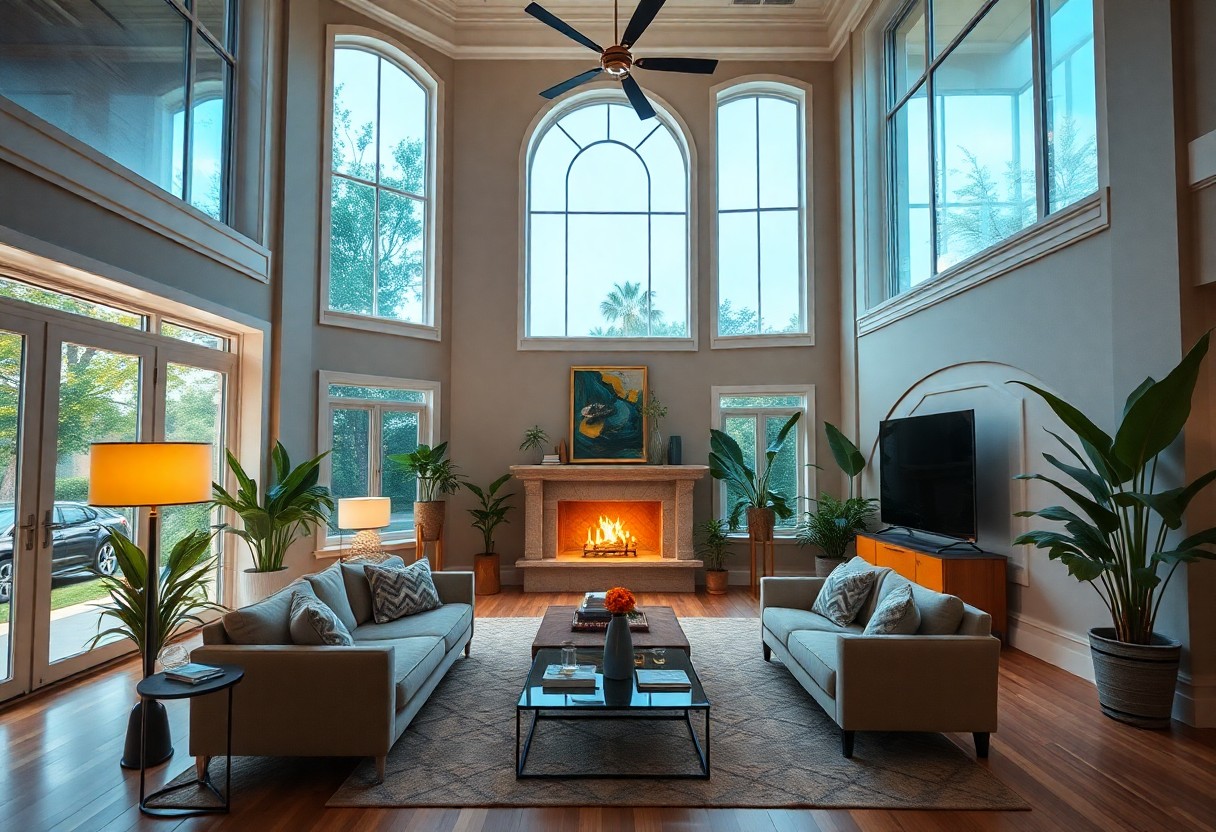
Factors That Influence Selling Price
All sellers want to maximize their return when it comes to selling their property. Understanding the various factors that affect your selling price can be the key to ensuring you get the most out of your real estate investment. Some of these factors include:
- Location and neighborhood appeal
- Market conditions
- Comparable sales analysis
Thou must consider these elements carefully when preparing your home for sale.
Location and Neighborhood Appeal
With location being one of the most significant attributes in real estate, you should examine how your property’s setting can enhance its value. Homes situated in desirable areas—close to quality schools, parks, public transport, or urban amenities—tend to fetch higher prices. Additionally, features such as a scenic view, safety ratings, and community charm can make your home more attractive to buyers.
It’s important to engage with local market dynamics. Buyers often prioritize neighborhoods over the house itself, so showcasing your neighborhood’s appeal can sway decisions in your favor. You might also consider emphasizing nearby attractions and the overall lifestyle it provides to potential buyers.
Market Conditions
That said, market conditions play a vital role in determining your selling price. The real estate market can swing between being a buyer’s and a seller’s market; understanding which one you’re in can help shape your pricing strategy. In a seller’s market, where demand exceeds supply, you can often price your home higher due to increased competition among buyers. Conversely, in a buyer’s market, you might need to adjust your price downward to attract offers, as buyers have more choices available.
To gain a better understanding of the current market conditions, take time to observe trends in your area. This includes looking at the average time homes stay on the market and any shifts in buyer demand. Analyzing these factors can provide insights that allow you to set a reasonable price for your home.
Comparable Sales Analysis
Analysis of comparable sales, often referred to as “comps,” is a valuable method for determining your home’s worth. By examining the selling prices of similar properties in your area, you can gauge a baseline for what you might expect to receive. Here’s a breakdown of the important elements to consider:
Comparables Overview
| Factor | Description |
|---|---|
| Location | Proximity to amenities and overall attractiveness of the neighborhood |
| Size and Features | Comparative square footage, number of bedrooms, bathrooms, and unique attributes |
| Condition | General maintenance and any recent upgrades |
| Time of Sale | Market conditions at the time of comparable sales |
Comparable sales analysis is not just a once-off task; it should be revisited periodically as market trends evolve. Understanding how the parameters of your home stack up against recent sales can help you adjust your expectations and pricing strategy accordingly, ensuring you stay competitive in the marketplace.
Comparable sales serve as a valuable benchmark. By monitoring how similar homes in your area have performed, you can make informed decisions about your pricing and marketing strategies. This knowledge will empower you to position your property effectively to attract the right buyers.
Pros and Cons of Emphasizing Unique Features
To make an informed decision about highlighting the unique features of your home when selling, it’s imperative to consider the advantages and disadvantages. Below is a breakdown of the pros and cons associated with emphasizing distinctive aspects of your property.
| Pros | Cons |
|---|---|
| Can make your home stand out in a crowded market | May lead to higher expectations from potential buyers |
| Helps create an emotional connection with buyers | Could alienate buyers who value practicality over uniqueness |
| Can justify a higher asking price | Risk of overestimating the value of certain features |
| Less competitive properties may overshadow unique aspects | Some features might not appeal to the majority of buyers |
| Allows you to highlight personal investment in the home | Specific tastes may limit your buyer pool |
As you navigate this process, you may find it beneficial to explore Features That Help Homes Sell for More Money, which can give you key insights into what buyers are currently looking for.
Advantages of Highlighting Features
Clearly, emphasizing the unique features of your home has several benefits. Firstly, showcasing distinctive characteristics can dramatically increase your property’s visibility in a saturated market, making it more appealing to potential buyers. Unique attributes, whether they are architectural details, premium finishes, or eco-friendly installations, can help you create a more memorable impression, ultimately leading to a quicker sale at a higher price. Additionally, differentiating your property can help generate excitement and competition among buyers, leveraging their emotional connections to increase their willingness to invest.
Potential Drawbacks
On the other hand, while emphasizing unique features can be advantageous, there are some potential drawbacks to consider. You risk setting higher expectations among buyers, which could lead to disappointment if they find the overall property does not meet their needs or desires despite the unique elements. Furthermore, some features that you consider valuable may not resonate with the wider market, potentially alienating prospective buyers who are focused more on utility than aesthetics.
Highlighting unique features also places significance on personal tastes that may not align with the preferences of buyers. If your home includes niche features or design choices that place it in a specific style category, it could limit your appeal to a broader audience, potentially extending the time it takes to sell your home. Understanding both sides of the equation can help you strike the right balance when marketing your property.
To Wrap Up
Taking this into account, showcasing the unique features of your property can significantly enhance its market appeal and potentially lead to a higher selling price. By effectively highlighting attributes such as architectural details, energy-efficient upgrades, or your home’s location, you can create a narrative that resonates with potential buyers. Your goal should be to help them visualize their lives in your space, making it feel like a home rather than just a property. Invest time in staging and presenting these features in an engaging way, whether through high-quality photographs, virtual tours, or descriptive listings that capture the essence of what makes your home special.
FAQ
Q: What unique features should I highlight to attract buyers and increase my home’s value?
A: To maximize your selling price, focus on unique features that can entice prospective buyers. Consider highlighting aspects like a spacious backyard, upgraded kitchen appliances, energy-efficient windows, hardwood flooring, or a beautifully landscaped garden. Additionally, if your home has a special architectural style, custom build-ins, or smart home technology, make sure to point these out in your listing and during showings. By emphasizing these standout attributes, you can create a more appealing package for potential buyers.
Q: How can staging my home help in showcasing its unique features for a higher sale price?
A: Staging your home is a powerful tool to emphasize its unique features and make it more appealing to buyers. By decluttering, rearranging furniture, and adding tasteful decorations, you can create a welcoming atmosphere that allows potential buyers to envision themselves living in the space. Focus on key areas like the living room, kitchen, and outdoor spaces to showcase their functionality and charm. Additionally, consider incorporating lighting and color schemes that highlight your home’s best attributes. Staging can help buyers see the true potential of your property, ultimately leading to a higher sale price.
Q: What role does highlighting neighborhood features play in selling my house for more money?
A: When selling your home, it’s important to not only focus on the property’s unique features but also on the benefits of the surrounding neighborhood. Highlighting local amenities such as parks, schools, shopping centers, and restaurants can make your home more attractive to buyers. Homebuyers often seek communities that offer convenience and lifestyle benefits. Ensure that your marketing materials include information about neighborhood safety, public transportation options, and community events. This way, you can create a compelling narrative about not just the home itself, but the vibrant community it’s part of, which can contribute to a higher selling price.

